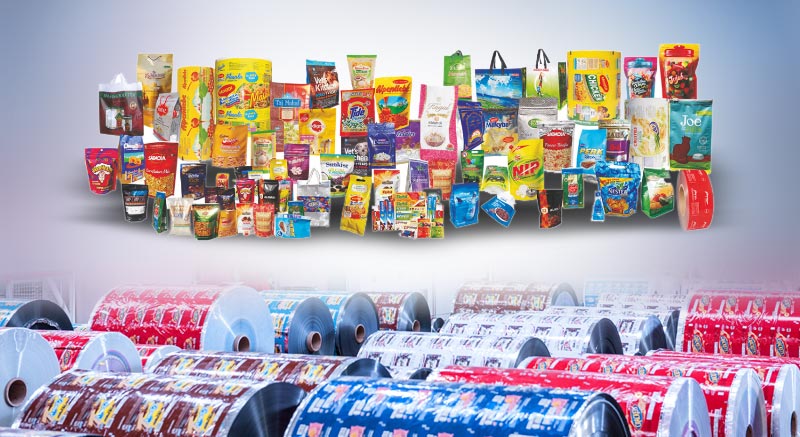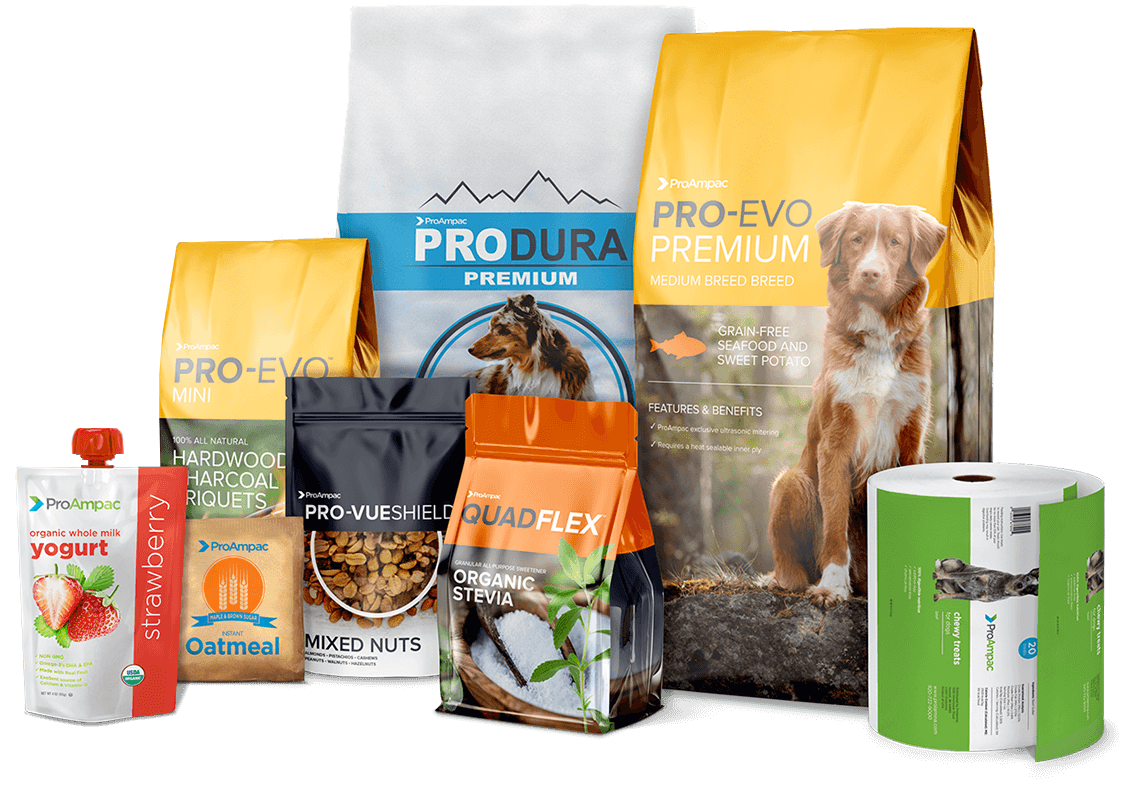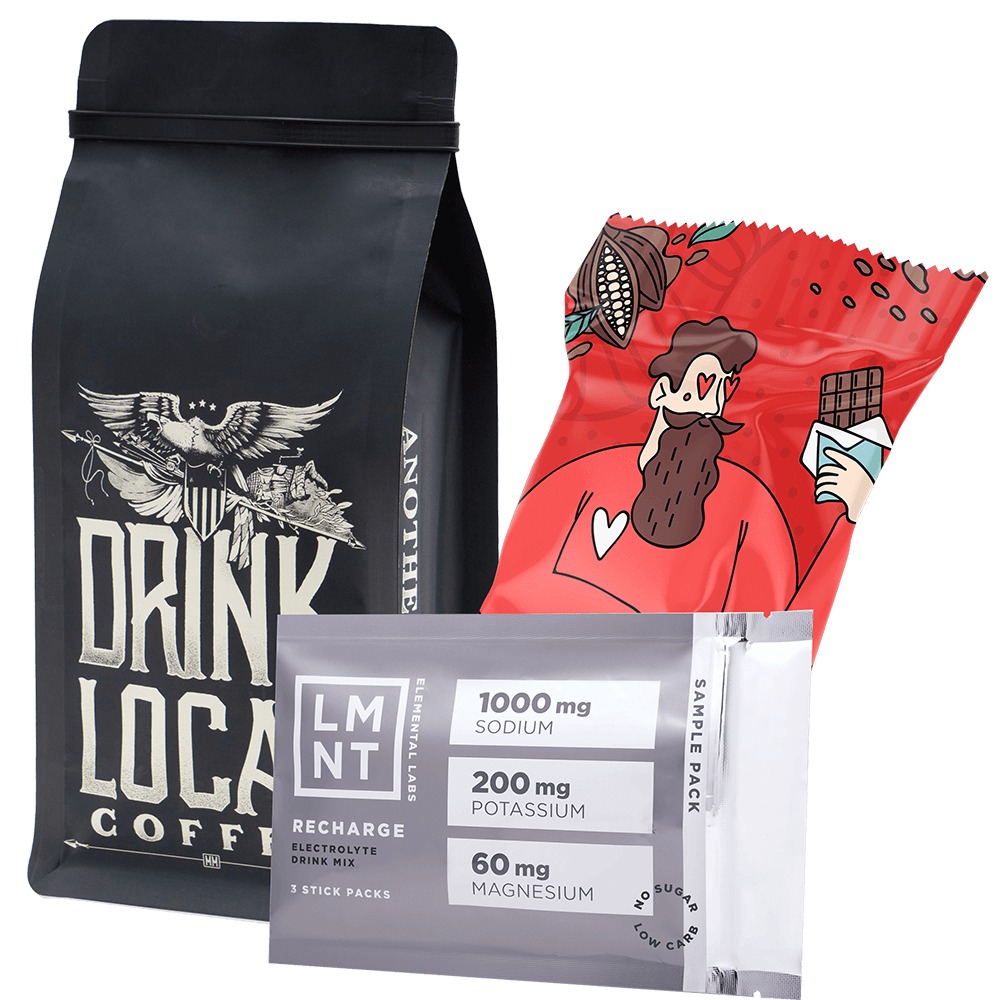The world is grappling with mounting waste, and traditional packaging methods are significant contributors. Businesses and consumers alike are seeking better alternatives. This article delves into the concept of zero waste packaging, exploring its importance, benefits, various types (biodegradable, compostable, recyclable, reusable), and the challenges of implementation. Understanding these sustainable packaging approaches is crucial for any business, like Mark Thompson’s in the USA, looking to reduce its environmental impact, meet consumer demand for sustainable packaging, and potentially lower costs. We’ll explore how factories like Allen’s in China are innovating to provide viable zero waste packaging solutions. Reading this will equip you with the knowledge to navigate the shift towards sustainability in the packaging industry.
What Exactly is Zero Waste Packaging?
Zero waste packaging refers to a system where all materials used in packaging are designed to be reused, recycled, or composted safely back into the environment, leaving behind no waste that needs to go to landfill or incineration. The core principle is to eliminate waste throughout the entire lifecycle of the packaging, from packaging production to disposal. It’s a holistic approach that challenges the traditional linear model of "take-make-dispose" and promotes a circular economy where resources are kept in use for as long as possible.
The concept of zero waste packaging isn’t just about the end-of-life disposal; it encompasses minimizing resource use during manufacturing, using non-toxic inks and adhesives, and designing packaging for easy disassembly and recycling or composting. For businesses like Mark Thompson’s, which sources packaging internationally, understanding this concept means looking for suppliers like Allen’s factory that prioritize these principles in their packaging solutions. It’s about designing waste out of the system from the very beginning, ensuring that packaging serves its purpose efficiently without contributing to long-term pollution.
Ultimately, zero waste packaging aims to minimize waste generation significantly. This involves rethinking packaging design, choosing appropriate packaging materials, and educating consumers on proper disposal. It moves beyond simply using recyclable materials to considering the entire system, including collection infrastructure and processing capabilities, to ensure materials are actually recovered and repurposed, thus truly achieving a zero-waste goal for packaging.

Why is the Shift Towards Sustainable Packaging So Crucial Today?
The urgency for sustainable packaging stems directly from the enormous environmental impact of conventional packaging. Mountains of plastic waste, particularly single-use packaging, choke our oceans, harm wildlife, and contribute to microplastics entering the food chain. Landfills are overflowing, generating methane, a potent greenhouse gas, contributing to climate change. The production of traditional packaging often relies on finite fossil fuels, further increasing carbon emissions and environmental footprint.
Consumers are increasingly aware of these issues and are demanding change. Market trends show a clear preference for brands that demonstrate environmental responsibility. For companies like Mark’s, adopting zero waste packaging isn’t just an ethical choice; it’s becoming a market imperative. Ignoring the demand for sustainable packaging can lead to loss of customer loyalty and damage brand reputation. Regulatory bodies worldwide are also tightening rules around packaging waste, pushing industries towards more sustainable practices.
Furthermore, the focus on sustainability extends beyond environmental concerns. It encourages innovation in materials science, leading to the development of new, eco-friendly alternative to traditional materials, often derived from renewable resources like plant-based sources or agricultural waste. This shift can create new economic opportunities and more resilient supply chains. Embracing sustainable packaging is essential for environmental health, market relevance, and long-term business viability. It’s about acknowledging the planetary cost of our consumption and actively working towards packaging solutions that minimize waste and pollution.
How Can Adopting Zero Waste Packaging Benefit Your Business?
Integrating zero waste packaging principles offers tangible advantages for businesses. Firstly, it significantly enhances brand image and resonates with environmentally conscious consumers. In a competitive market, demonstrating a commitment to sustainability can be a powerful differentiator, attracting customers like Mark Thompson who value responsible practices. This positive perception can translate directly into increased sales and customer loyalty, particularly as consumers actively seek out eco-friendly brands.
Secondly, while there might be initial investment costs, zero waste packaging can lead to long-term savings. Reusable packaging systems, for instance, eliminate waste and the need for single-use containers, reducing ongoing procurement costs. Optimizing packaging design to use less packaging material (reducing waste) also cuts down on material expenses and potentially shipping costs due to lighter weight. Efficient recycling and composting programs can sometimes reduce waste management fees. Therefore, well-implemented zero waste packaging can save money in the long run.
Finally, adopting sustainable packaging proactively prepares businesses for evolving regulations. Governments globally are increasingly implementing stricter rules regarding plastic waste and extended producer responsibility (EPR) schemes. By transitioning to zero waste packaging solutions now, companies can avoid future penalties, ensure compliance, and position themselves as leaders in sustainability. It fosters innovation within the company, encouraging teams to find creative and efficient packaging solutions that reduce the environmental impact of their products throughout their lifecycle.

What are the Primary Types of Eco-Friendly Packaging Materials?
Eco-friendly packaging encompasses a range of materials designed to reduce environmental impact compared to traditional options. Key categories include:
- Recyclable Packaging: Made from materials like glass, metal (aluminum, steel), paper, cardboard, and certain types of plastics (like PET and HDPE) that can be collected, processed, and remanufactured into new packaging or products. The effectiveness relies heavily on consumer participation and adequate recycling infrastructure. Choosing easily recyclable packaging is a fundamental step.
- Compostable Packaging: This packaging material is designed to break down naturally in specific compost conditions (home or industrial) into non-toxic components (water, biomass, carbon dioxide). Compostable materials are often plant-based, derived from sources like corn starch (polylactic acid or PLA), sugarcane (bagasse), or mushrooms (mycelium). It’s crucial that compostable packaging reaches a compost facility to avoid ending up in landfill, where it may not decompose properly.
- Biodegradable Packaging: While often used interchangeably with compostable, biodegradable packaging refers to materials that can break down naturally by microorganisms over time. However, the term lacks strict definition regarding timeframe or the conditions required for breakdown, and some biodegradable plastics can leave behind microplastics or toxic residues. True eco-friendly biodegradable packaging should decompose fully and harmlessly in a reasonable period. Compostable packaging is generally preferred due to stricter standards (like ASTM D6400 or EN 13432).
- Reusable Packaging: This involves packaging designed for multiple uses, such as sturdy containers, refillable bottles, or durable tote bags. Reusable packaging directly tackles waste generation by eliminating the need for disposable options.
Choosing the right eco-friendly packaging depends on the product, supply chain, available waste management infrastructure, and cost considerations.
Is Reusable Packaging a Practical Solution for Reducing Waste?
Reusable packaging is arguably one of the most effective strategies within the zero waste framework for reducing waste significantly. Instead of focusing on end-of-life recycling or composting, reusable systems aim to keep packaging in circulation for as long as possible, drastically cutting down on the production of single-use packaging. This approach directly addresses the root cause of much packaging waste by designing out the need for disposable items.
The practicality of reusable packaging varies depending on the application. It’s highly effective in closed-loop systems (e.g., B2B logistics using durable crates) or through consumer-facing refill/return models. Examples include:
- Refill stations for cleaning products or personal care items.
- Returnable beverage containers (glass bottles, durable cups).
- Subscription services using reusable containers for meal kits or groceries.
- Durable shipping mailers designed for multiple round trips.
Implementing reusable packaging systems requires logistical planning, including reverse logistics for collection, cleaning processes that meet hygiene standards, and consumer engagement to ensure participation. Initial costs for durable packaging and system setup can be higher, but these are often offset by long-term savings on single-use packaging procurement and potential waste disposal fees. For businesses like Mark’s, exploring reusable packaging for certain product lines or transport packaging could offer substantial sustainability benefits and operational efficiencies. Its practicality hinges on system design, consumer adoption, and infrastructure support.

How Do Recyclable Materials Fit into the Zero Waste Philosophy?
Recyclable materials are a cornerstone of the zero waste philosophy, but their role is nuanced. The goal of zero waste is to prevent waste entirely, prioritizing reduction and reuse. Recycling comes next in the hierarchy, serving as a crucial method for managing materials that cannot be eliminated or reused, ensuring they are recovered and repurposed rather than ending up in landfill or as pollution. Using recyclable packaging is vital for diverting waste and conserving raw materials.
However, relying solely on recycling doesn’t achieve zero waste. Several challenges exist:
- Recycling Infrastructure: Not all communities have access to comprehensive recycling facilities for all types of recyclable packaging material.
- Contamination: Improper sorting or food residue can contaminate recycling streams, rendering materials unusable.
- Downcycling: Many materials, especially plastics, lose quality each time they are recycled (downcycling) and may eventually become unrecyclable waste.
- Market Demand: The economic viability of recycling depends on market demand for recycled materials.
Therefore, within a zero waste framework, the focus should be on designing packaging for maximum recyclability (e.g., using mono-materials, avoiding problematic labels or inks), supporting robust collection systems, and increasing the use of recycled content in new packaging. Recycling packaging materials is essential, but it should complement, not replace, efforts to reduce consumption and implement reusable packaging systems to truly minimize waste and move towards a circular economy.
What Makes Compostable Packaging Different from Biodegradable?
The terms compostable and biodegradable are often confused, but they have distinct meanings within the context of sustainable packaging. Understanding the difference is critical for making informed choices about packaging materials and ensuring proper end-of-life management.
Biodegradable packaging simply means the material can be broken down by microorganisms (bacteria, fungi) over time. However, this definition lacks specifics:
- Timeframe: It doesn’t specify how long it takes to break down naturally. It could be months, years, or even decades.
- Conditions: It doesn’t define the environment required (e.g., soil, water, landfill). Many biodegradable plastics only break down under specific industrial conditions, not in a typical backyard compost heap or marine environment.
- Residue: It doesn’t guarantee the breakdown products are non-toxic. Some biodegradable materials can leave behind microplastics or harmful residues.
Compostable packaging, on the other hand, adheres to stricter standards (like ASTM D6400 in the US or EN 13432 in Europe). To be certified compostable, a material must:
- Break Down: Disintegrate within a specific timeframe (e.g., 90% disintegration within 12 weeks in industrial compost).
- Biodegrade: Undergo biological decomposition to yield CO2, water, and biomass at a rate comparable to known compostable materials (like paper).
- Leave No Toxic Residue: The resulting compost must be non-toxic and support plant growth.
Essentially, all compostable packaging is biodegradable, but not all biodegradable packaging is compostable. Compostable packaging is designed to become valuable soil amendment (compost) under controlled conditions, fitting well into a circular economy model if properly collected and processed. Choosing certified compostable packaging offers greater assurance of environmental benefit compared to vaguely labelled "biodegradable" packaging, especially for applications like food packaging where contamination makes recycling difficult. Proper disposal in designated compost streams is essential for compostable packaging to work effectively.

What Challenges Must Businesses Overcome When Implementing Zero Waste Packaging?
Transitioning to zero waste packaging presents several hurdles that businesses, including those like Mark Thompson’s sourcing from factories like Allen’s, need to navigate. A primary challenge is often cost. While sustainable packaging options like reusable containers can offer long-term savings, the initial investment in materials, system redesign, or new equipment can be significant, especially for smaller businesses. Finding eco-friendly materials that match the performance and cost-effectiveness of traditional packaging can also be difficult.
Supply chain complexity is another major factor. Implementing reusable packaging requires robust reverse logistics systems for collecting, cleaning, and redistributing containers. Ensuring the availability and consistent quality of sustainable packaging materials (like certified compostable or high-recycled-content packaging) across global supply chains can be demanding. Mark might face challenges ensuring consistent print quality, durability, and sealing integrity when switching to new packaging materials from suppliers, potentially impacting product protection and brand aesthetics.
Furthermore, infrastructure limitations and consumer behavior play crucial roles. The success of recyclable and compostable packaging depends heavily on the availability of appropriate collection and processing facilities, which vary widely by region. Educating consumers on how to properly recycle, compost, or return reusable packaging is essential but often requires ongoing effort and clear communication. Overcoming inertia and ensuring convenient participation are key to making zero waste packaging systems work effectively at scale. Addressing these challenges requires collaboration between businesses, suppliers, waste management providers, and consumers.
How Can Companies Effectively Reduce Excess Packaging?
Reducing excess packaging, often referred to as source reduction, is a fundamental principle of zero waste and one of the most impactful ways to lessen environmental impact. It involves minimizing the amount of packaging material used without compromising product protection. Companies can achieve this through several strategies. Firstly, packaging optimization involves analyzing current packaging designs to identify opportunities for lightweighting (using less material), rightsizing (ensuring the package fits the product snugly), and eliminating unnecessary components like redundant layers or fillers.
Secondly, adopting innovative materials and designs can help. For example, using stronger yet thinner films for flexible packaging options like pouches can reduce material volume. Concentrating products (like detergents or beverages) allows for smaller packaging. Shifting from rigid containers to flexible pouches, where appropriate, often uses significantly less packaging material. Allen’s factory, specializing in various pouch styles (like Flat Bottom Pouches or Three-Side Seal Pouches), can offer solutions designed for material efficiency.
Thirdly, rethinking the delivery model can eliminate layers of packaging. Bulk dispensing systems, refill models, and consolidating shipments reduce the need for single-use packaging. For e-commerce, designing packaging that is "ship-ready" without requiring an additional outer box minimizes excess packaging along shipping routes. Companies like Mark’s should work closely with their suppliers to explore these options, focusing on functional, minimalist packaging that protects the product effectively while generating the least possible waste. This not only benefits the environment but can also lead to cost savings in materials and shipping.
What Does the Future Hold for Zero Waste and Sustainable Packaging Innovations?
The future of packaging is undeniably moving towards greater sustainability and zero waste principles, driven by consumer pressure, regulatory action, and corporate responsibility goals. We can expect continued innovation across several fronts. Material science will play a key role, with ongoing development of advanced biodegradable and compostable packaging materials derived from novel sources like algae, seaweed, or agricultural waste. These alternatives to traditional plastics aim to offer better performance, faster decomposition rates, and reduced reliance on food crops like corn for PLA. Enhanced recycling technologies, including chemical recycling, will emerge to handle hard-to-recycle plastics and improve the quality of recycled content.
Smart packaging solutions will likely integrate sustainability features. This could include embedded sensors to track reusable containers, QR codes providing consumers with detailed information on recycling or composting instructions, or materials that change color to indicate freshness, potentially reducing food waste alongside packaging waste. We will also see a significant expansion of reusable packaging systems, moving beyond niche applications to become mainstream options for groceries, takeout food, and e-commerce, supported by improved logistics and digital platforms. Standardization of reusable containers could further facilitate adoption.
Furthermore, design for circularity will become paramount. Packaging will be increasingly designed from the outset considering its entire lifecycle – ease of disassembly, use of mono-materials for better recycling, and suitability for either reuse, recycling, or composting. Collaboration across the value chain – from material suppliers like Allen’s factory to brands like Mark’s, retailers, consumers, and waste management companies – will be essential to build the necessary infrastructure and behavioral changes to fully realize the potential of zero waste packaging. The focus will shift from merely managing waste to preventing it altogether, creating a truly circular economy for packaging. The packaging landscape is set for a transformative period centered on sustainability and resource efficiency.

Key Takeaways on Zero Waste Packaging:
- Definition: Zero waste packaging aims to eliminate waste by designing packaging for reuse, recycling, or composting, avoiding landfill.
- Importance: Crucial for reducing environmental impact, mitigating plastic waste and pollution, meeting consumer demand for sustainable packaging, and complying with regulations.
- Benefits: Enhances brand image, can lead to long-term cost savings (especially reusable packaging), and ensures regulatory compliance.
- Types: Includes recyclable, compostable (stricter standards than biodegradable), biodegradable, and reusable packaging.
- Reuse: Reusable packaging is highly effective, directly reducing the need for single-use packaging but requires system changes.
- Recycling: Essential for managing materials but secondary to reduction and reuse in the zero waste hierarchy; effectiveness depends on infrastructure and design.
- Compostable vs. Biodegradable: Compostable packaging meets specific standards for breakdown into non-toxic compost; biodegradable is a less precise term. Proper disposal is key for both.
- Challenges: Include initial costs, supply chain complexity, infrastructure gaps, and influencing consumer behavior.
- Source Reduction: Minimizing excess packaging through optimized design and material choices is fundamental. Check out options like eco-friendly pouch bags.
- Future: Expect innovations in materials (advanced compostable/biodegradable options like PLA packaging), smart packaging, expansion of reusable systems like flexible containers, and design focused on the circular economy.
Post time: 04-28-2025

